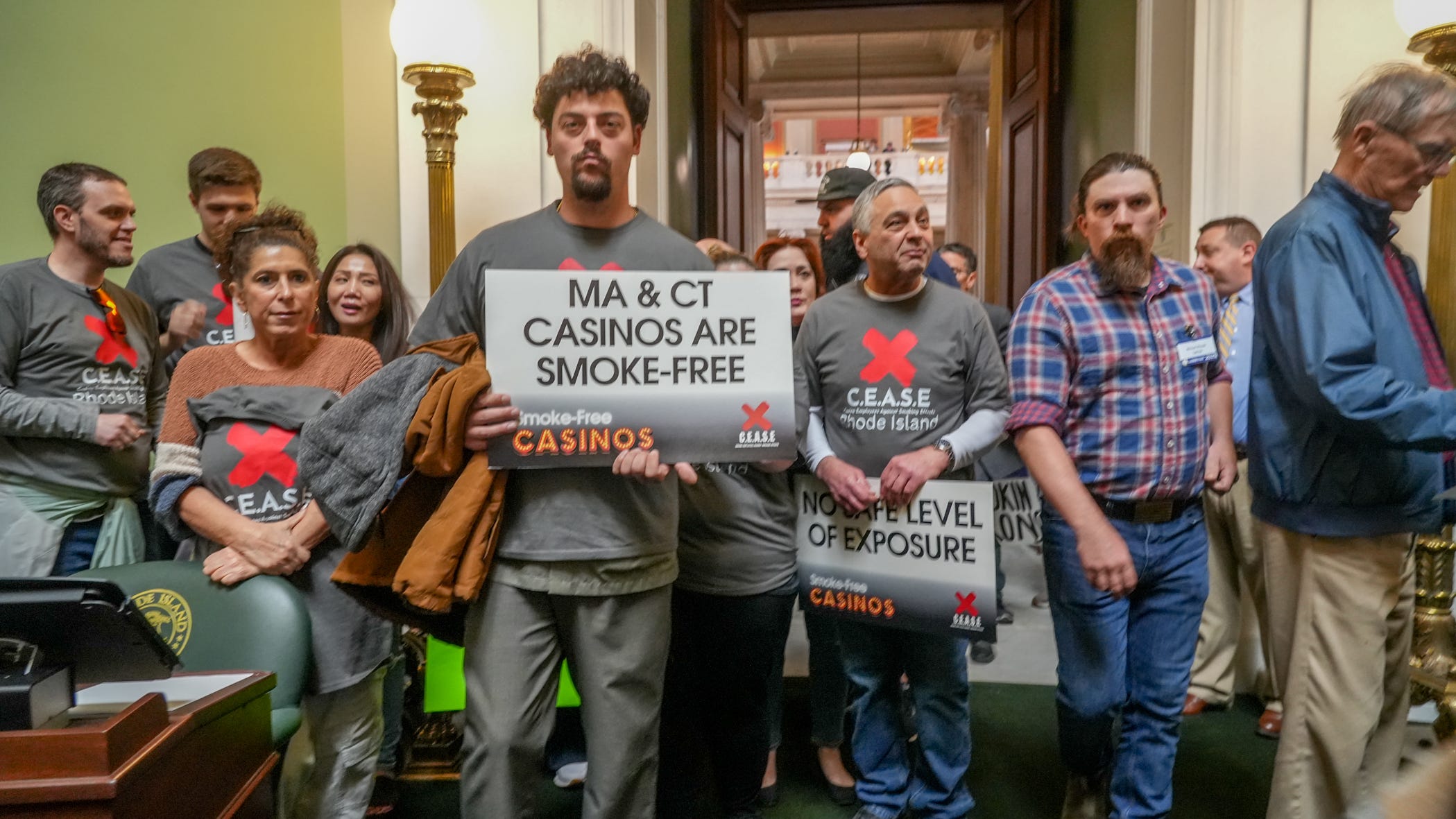

No More Smoke, Say Casino Workers
Rep. Teresa A. Tanzi today introduced legislation (2023 H-5237) to include casinos in the state’s law prohibiting smoking in workplaces.
- Kratom, a plant-based substance with opioid-like effects, is becoming increasingly popular and easily accessible, raising concerns about potential addiction.
- A patient, “Mr. B,” developed a dependence on kratom-infused drinks, highlighting the risks of unregulated kratom use.
- Kratom’s legality varies by state, with Rhode Island currently banning it while neighboring Massachusetts allows it.
We have seen this before: A company advertises a cure-all, with limited understanding of long-term risks; the public consumes said cure-all. For some, it’s described as a miracle, while others fall victim to more sinister effects, like physiologic dependence. The company will claim its product is non-addictive when used at recommended doses and blame is placed on consumers with a “history of substance abuse” when dependence does occur.
The company becomes a sponsor of nationally-recognized organizations; advertisements for its product are filled with beautiful nature scenes and beautiful people. Meanwhile, consumers present to our clinics and hospitals unsure of how they developed dependence or addiction. This is the story of prescription opioids; it is also the story of commercialized kratom.
Mr. B presented to our addiction clinic in Boston as a 35-year-old father of four with a history of alcohol use disorder, now in recovery, and hypertension. Six months prior, he made the health-conscious decision to trade his Monster energy drinks for a metallic, chic bottle that he discovered at a local gas station. Advertised for its unique combination of organic ingredients including kratom, this seltzer seemed like a healthier way to start his days.
He began with the recommended one to two bottles per day, but quickly found himself returning to the local gas station for more. Before he knew it, Mr. B was consuming up to 10 of these bottles daily, unaware of the action of kratom and its metabolites on his opioid receptors. After a few unsuccessful attempts at tapering were complicated by symptoms of severe opioid withdrawal, Mr. B was looking for help.
Kratom (Mitragyna speciosa) is a plant native to Southeast Asia; its leaves contain alkaloids that interact with opioid receptors. At low doses, kratom produces stimulant effects, with higher doses resulting in effects similar to those produced by opioids, including pain relief and sedation. While its role in managing opioid withdrawal and as a treatment for opioid use disorder and chronic pain have been touted by some, regular kratom use can lead to physiologic dependence and withdrawal symptoms upon discontinuation.
The U.S. Drug Enforcement Administration unsuccessfully attempted to make kratom a Schedule I controlled substance in 2016 after there were public demonstrations, petitions and calls by Congress to overrule the decision. As a result, it is not currently regulated by the U.S. Food and Drug Administration. Kratom remains legal in most states, with varied legal purchase age regulations and other restrictions according to a 2024 report. Kratom is currently banned in Rhode Island, but legal in neighboring Massachusetts.
By our team’s calculations, in drinking escalating amounts of kratom-containing beverages, Mr. B was unknowingly consuming up to 600 morphine equivalents daily. Due to the opioid dependence that he experienced, Mr. B was started on buprenorphine-naloxone, an FDA-approved treatment for opioid use disorder, which has been shown to be effective in the management of kratom use disorder.
“I should have known with my addictive personality,” he says, echoing the patronizing warning label included on those metallic bottles, which reads: Consider avoiding any potentially habit-forming substances if you have a history of substance use. Consumers are advised to start with 1 mL (1 serving) of the 2 mL bottle. Notably absent on the label is any mention of potential opioid-like effects or development of opioid dependence and withdrawal with regular use.
The aggressive advertisements, incomplete labeling, and company-sponsored trials touting benefits and minimizing risks of kratom are eerily familiar to marketing tactics we have seen before. As with the tobacco industry and opioid-manufacturing pharmaceutical companies, the current commercialized kratom market is dangerous and legislative oversight is needed to prevent public harm. Without it, a new wave of victims is inevitable.
We implore the elected officials of the General Assembly to maintain the statewide ban on kratom. As we have seen first-hand, there is danger in legalizing kratom. For Mr. B, it started with a harmless decision while at a gas station. This decision and the physiologic dependence that ensued have had life-altering consequences for Mr. B and his family.
We have seen this before. Veto House bill 5565 and maintain the ban on kratom for a safer Rhode Island.
Dr. Gregory Woods is a Providence resident who works in addiction medicine at Brigham and Women’s Hospital and Harvard Medical School in Boston. This commentary was written in collaboration with Drs. Olga Terechin, Lauren Malishchak and Patrick McGuire. The views expressed are their own. Changes were made to protect Mr. B’s identity.









